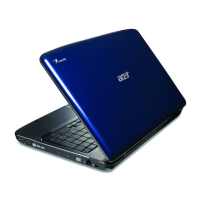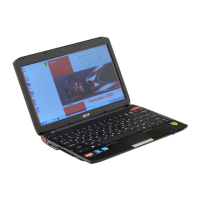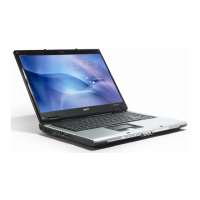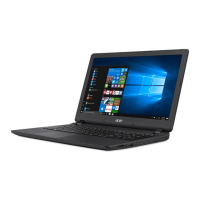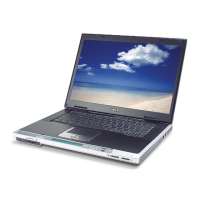
Do you have a question about the Acer 2020 Series and is the answer not in the manual?
An overview of the documentation provided to help users set up and use their Aspire computer.
Provides essential advice on maintaining and using the computer effectively for optimal performance and longevity.
Instructions for powering the computer on and off, including details on using the power button and shutdown methods.
An introduction to the computer's layout and components, detailing various views and their functions.
Details the key performance, multimedia, connectivity, and design aspects of the Aspire notebook computer.
Explains the data storage options available on the computer, including hard disk and optical drives.
Describes the various ways the computer can connect to networks and other devices, such as Ethernet and modem.
Introduces the multimedia software suite for instant-on access to media playback and system information.
Covers hardware and software security measures, including Kensington lock slots and password protection.
Information on the computer's battery pack, including characteristics, charging, and installation procedures.
Explains the battery-low warning indicator and recommended actions to prevent data loss.
Details the system's power management features that monitor activity and conserve energy.
How to connect external monitors or projectors to the computer using the external display port.
Connects various input devices like keyboards, keypads, and mice via USB ports for enhanced functionality.
Information on connecting USB peripherals, highlighting plug-and-play and USB hub capabilities.
Details on connecting IEEE 1394 supported devices, such as digital video cameras.
Instructions for connecting parallel and USB printers, including setup and driver installation.
Connects external audio input/output devices like microphones and headphones to the computer.
Information on using the PC card slot for expanding computer capabilities with various cards.
Guidance on upgrading key components like memory and hard disk drives to enhance performance.
Steps to safely turn off and disconnect the computer from peripherals before moving.
Tips for moving the computer short distances, including preparing it for standby mode.
Advice on preparing the computer for short trips between office and home, including packing.
Considerations for making longer trips with the computer, including items to bring and security checks.
Precautions and advice for traveling abroad with the computer, focusing on power and air travel.
Information on preloaded software including Windows OS, BIOS utility, and system utilities.
Details the multimedia suite for playing movies, photos, and music, including its features and controls.
Explains the BIOS setup utility for configuring hardware and system settings, accessed via the F2 key.
Lists the specifications of the computer's microprocessor, including model and speed.
Details the computer's memory configuration, including type, capacity, and slots.
Outlines the computer's data storage capabilities, such as card readers and hard disk drives.
Lists and describes the various input/output ports available on the computer for connectivity.
Specifies the computer's power sources, including battery type and AC adapter rating.
Lists available optional accessories for the computer, such as additional adapters and memory.
Compliance information for the European Union, including relevant directives and applicable countries.
Outlines RF safety requirements and user instructions for wireless devices to comply with FCC regulations.
Formal declaration of compliance with FCC rules by the manufacturer/importer.
Critical safety warnings and instructions for the proper and safe operation of the computer.



